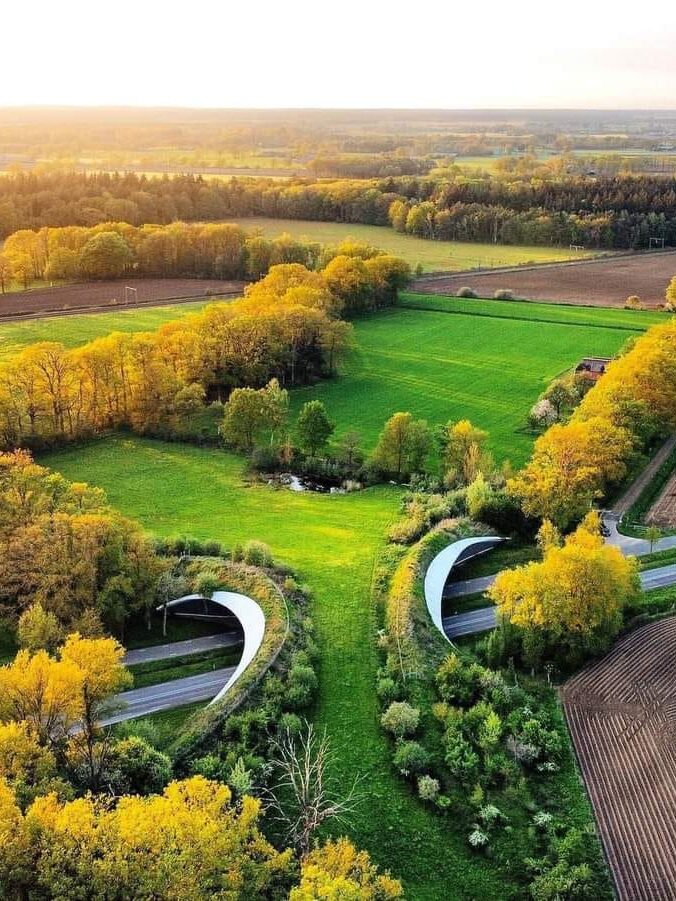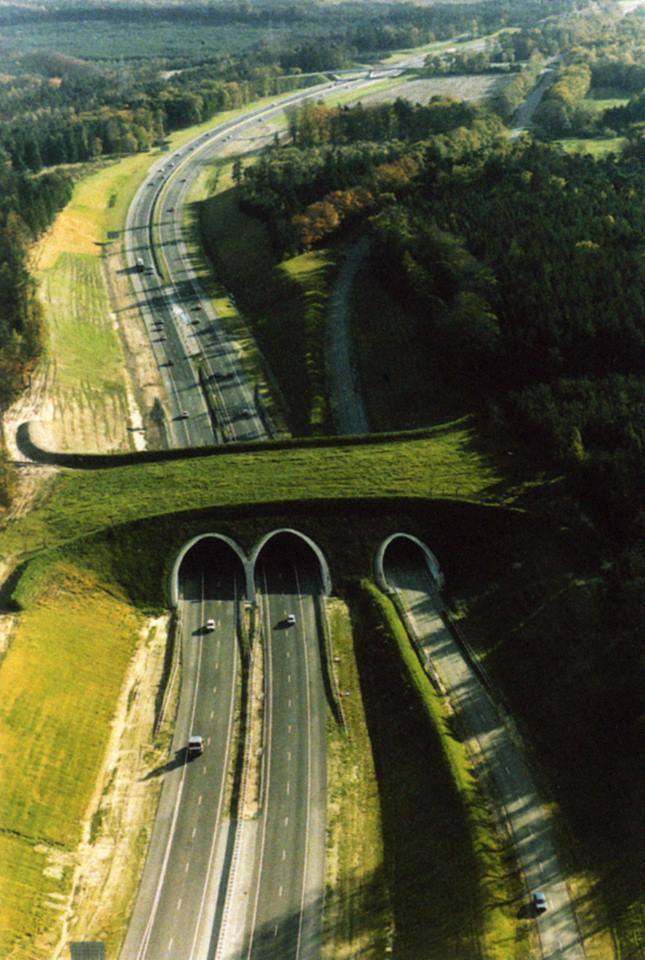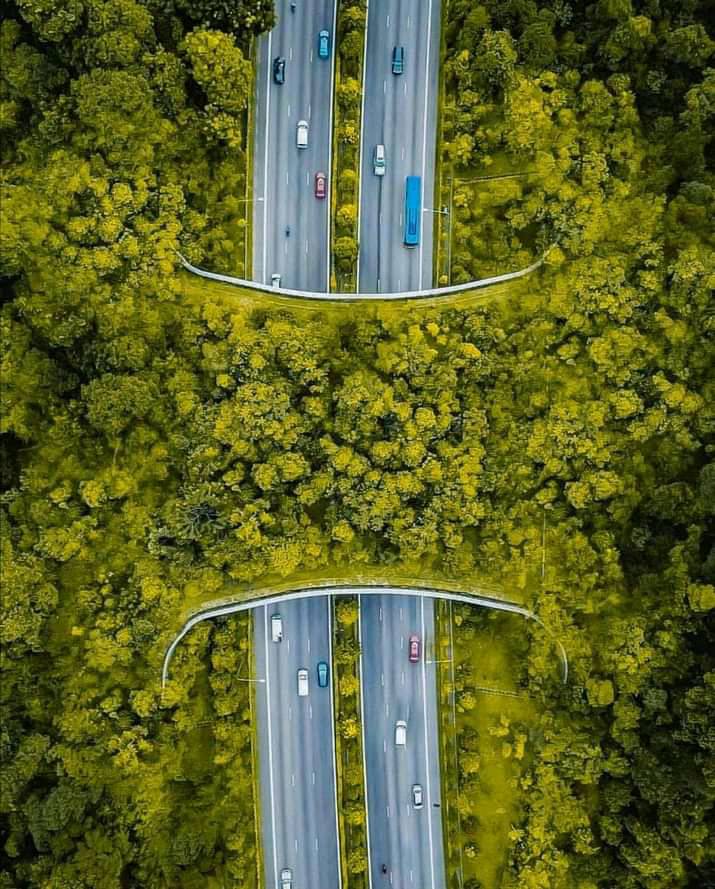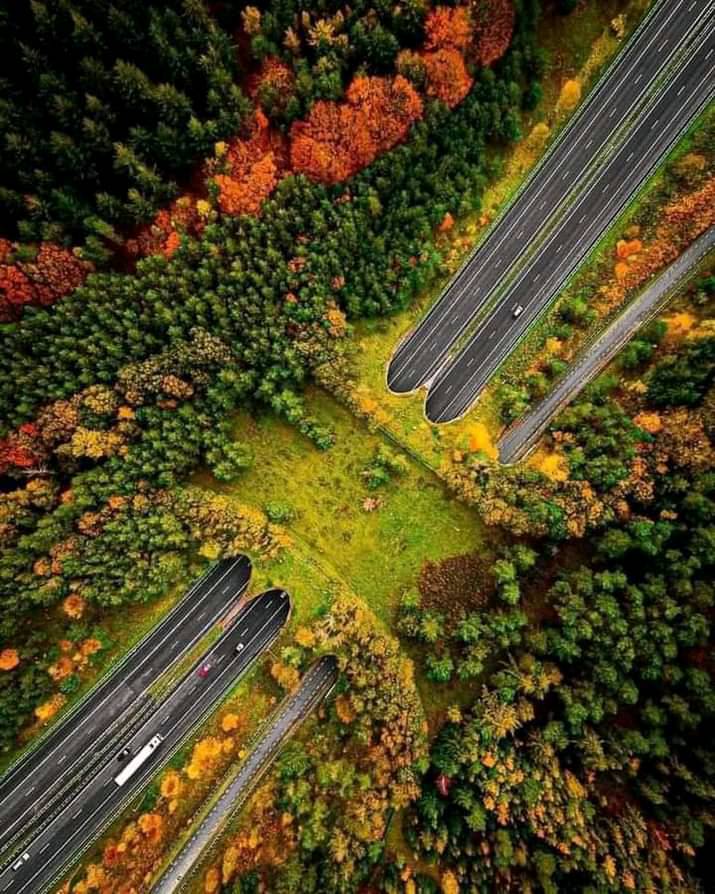The Netherlands is renowned for its ingenious infrastructure solutions. However, one of its most remarkable examples is its pioneering and innovative wildlife bridges. The concept of overpasses for wildlife isn’t new, but the Netherlands elevates this idea to a whole new level. The country boasts of over 600 miles of dedicated cycle paths, and nature is embraced way beyond the city limits.

The Netherlands has the highest population density in Europe, and encroachment and fragmentation of natural habitats have significantly affected wildlife. This scenario prompted the construction of wildlife overpasses. These structures are essentially green bridges that connect fragmented landscapes. The objective of wildlife bridges is twofold- protect biodiversity and ensure safe transit for motorists.

The Netherlands’ wildlife bridges are designed with nature in mind. They are not only practical but are aesthetically pleasing. The bridges are constructed with vegetation, which makes them visible and easily accessible to animals, birds, and insects. They are also linked to surrounding habitats, allowing wildlife to seamlessly cross without any obstructions.

The success of these wildlife bridges is manifested in the number of species that have started using them. Studies conducted on the effectiveness of the bridges have demonstrated an increase in animals crossing them. The most notable species encountered on Dutch wildlife bridges include rabbits, foxes, deer, and a variety of bird species. It’s worth noting that some of these animals have never been witnessed in the area for decades. This success story has also encouraged new urban developments to incorporate wildlife bridges in their plans, further fostering the protection of biodiversity.

The financial benefits of wildlife bridges cannot be overlooked. Traffic accidents can cause significant damage in terms of property damage, injuries, and fatalities. The construction of wildlife overpasses has not only reduced the number of human-wildlife collisions but also the cost of road repairs. By ensuring the safe transit of both wildlife and motorists, the Netherlands has saved millions of dollars in accident repairs.

The wildlife bridges are also an excellent means of educating the public on the importance of biodiversity and sustainability. Signboards and placards are placed around the bridges explaining the significance of these structures in maintaining a balance between nature and human infrastructure.
The location of the bridge is also important, as it needs to be situated in an area where animals are known to cross the road. This is typically determined by studying the movement patterns of local wildlife and identifying areas where there is a high risk of roadkill.
The Benefits of Having a Wildlife Crossing System in Place for Both Animals & Humans
There are several benefits to having wildlife crossing systems in place for both animals and humans in the Netherlands:
- Reduced Risk of Collisions: One of the primary benefits of wildlife crossings is that they reduce the risk of collisions between vehicles and animals. This helps to protect both animals and humans, as vehicle collisions with large animals can be deadly for both.
- Preservation of Biodiversity: By providing safe passage across roads, wildlife crossings help to preserve the biodiversity of the local ecosystem. This is particularly important in areas where habitat fragmentation has occurred due to human activity.
- Improved Animal Movement: Wildlife crossings allow animals to move more freely across the landscape, maintaining genetic diversity and promoting healthy population dynamics. This is particularly important for species that require large areas of habitat to thrive.
- Eco-Tourism: Wildlife crossings can also be a draw for eco-tourists, who may be interested in watching animals use the crossing. This can provide economic benefits to local communities and help to raise awareness about the importance of wildlife conservation.
- Cost-Effective: While the initial construction cost of wildlife crossings can be significant, they are often more cost-effective in the long run than other methods of reducing animal-vehicle collisions, such as fencing or animal detection systems.
Wildlife crossings provide numerous benefits to both animals and humans in the Netherlands. By reducing the risk of collisions and promoting healthy ecosystems, they help to ensure that both people and wildlife can thrive in the same landscape.

